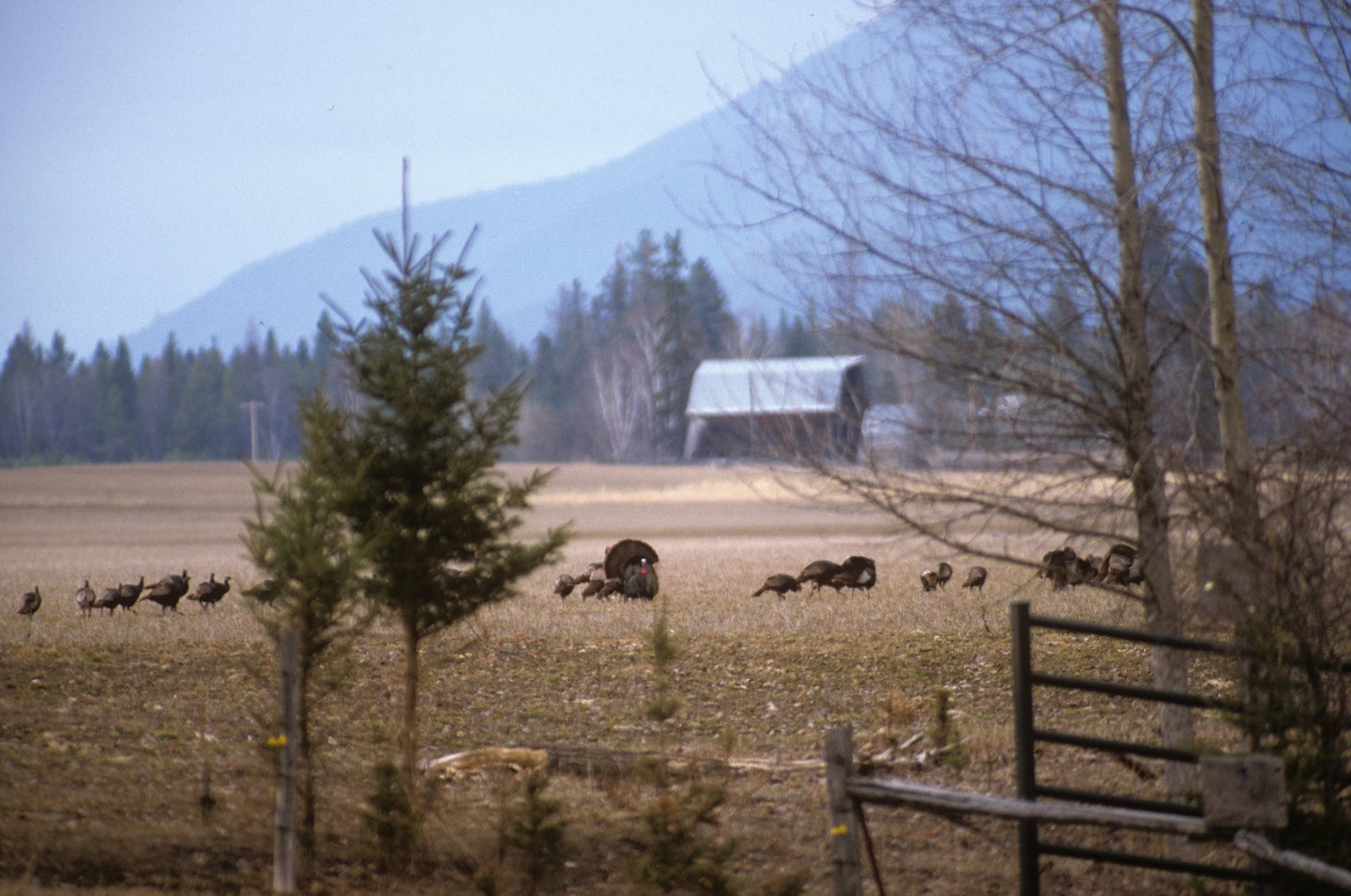Bird Flu Discovered in Montana Wild Turkeys
Avian flu has spread into the wild turkey population out West

Bird flu is sweeping the country for the first time since 2015. Since January, 34 states have had 319 outbreaks affecting nearly 38 million birds. But a few weeks ago, Montana recorded a first—H5N1 in wild turkeys.
In late April, a resident of Billings found a dead turkey in his yard. Bob Gibson, an information and education program manager at Montana Fish, Wildlife and Parks, told NBC Montana, “(He) assumed it got hit by a car, so he bagged it up and threw it away. And when he found more in his yard the next day, he called us.” Game wardens found seven dead turkeys and tested three. All three were positive for avian flu.
The type of H5N1 that killed the Montana turkeys is called Highly Pathogenic Avian Influenza (HPAI). Explained Gibson, “This one is called Highly Pathogenic Avian Influenza for a reason—it’s highly pathogenic. Birds get anywhere close to it, seems like they catch it. And it’s always fatal.”
Globally, H5N1 first appeared in Guangdong, China, in 1996. In 2005, it reached epidemic scale, with outbreaks in poultry and migrating wild-bird populations spreading to Russia and eastern Europe. After 142 humans contracted the virus, and half of them died, experts feared a pandemic. But human-to-human transmission was not sustained and surveillance and public health initiatives were largely successful.
According to the CDC, the recent HPAI outbreak does not present an immediate public-health concern. Only one human case has been detected in the United States this year. Still, authorities encourage proper handling of poultry and harvested wild birds, and cooking of all poultry and game bird meat and eggs to an internal temperature of 165 degrees F. Montana FWP and state veterinarians also suggest that people stop using bird feeders and only wear dedicated clothing when entering chicken coops.
The greatest threat, Gibson explained, remains bird-to-bird transmission. “This is spread so easily that by picking up a wild turkey and throwing it away and then touching your chickens, it could spread. People need to be aware that it is in their neighborhoods and that it is in birds and it does affect all birds. So eventually, songbirds could even get it.”